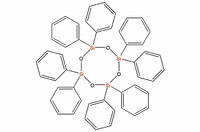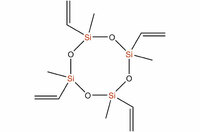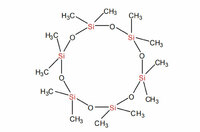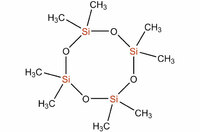SiSiB® PC5131
Product Quick Detail
- Place Of Origin
- China
- Minimum Order
- 1
- Packaging
- N/A
- Delivery
- 15 Days
Specifications
SiSiB® PC5131
Methyltrimethoxysilane
SiSiB® PC5131, MTMS chemical, an alkylalkoxysilane is an important component in sol-gel system. It is a colorless liquid. It hydrolyzes slowly in the presence of moisture (methanol is released) to
form reactive silanols. These react further to produce oligosiloxanes and then poly- siloxanes.
It is the equivalent of Momentive's A-1630, Dow's Z-6070, Wacker's M1-TRIMETHOXY, Evonik's Dynasylan MTMS, ShinEtsu's KBM-13. For methyltrimethoxysilane price and other more details, please
feel free to contact us.
Technical Data
CAS No. 1185 55 3
EINECS No. 214-685-0
Formula C4H12O3Si
Molecular Weight 136.3
Boiling Point 102°C [760mmHg]
Flash Point 9°C
Color and Appearance Colorless transparent liquid
Density 25/25°C 0.95
Refractive Index 1.369[25°C]
Min. Purity 99.5% (A Grade)
99.0% (B Grade)
Application
SiSiB® PC5131 organo sisib silicones are highly miscible with standard organic solvents, such as alcohols, hydrocarbons and acetone.
SiSiB® PC5131 is practically insoluble in neutral water and reacts only slowly to form silanols and higher condensation products. Addition of a hydrolytic catalyst (inorganic/organic acids, ammonia
or amines) accelerates the hydrolysis of SiSiB® PC5131 Methyltrimethoxysilane substantially.
SiSiB® PC5131 is used as an important component in sol-gel systems.
SiSiB® PC5131 alkyl alkoxy silane is also used in the production of silicone resins and condensation-curing silicone rubber.
[Filler Modifier] SiSiB® PC5131 Methyltrimethoxysilane is used mainly to render a wide range of surfaces and materials water repellent (e.g. mineral fillers, pigments, glass, cardboard). MTMS
silane CAS 1185 55 3 may be used pure or in solution to treat fillers, using suitable mixing equipment. It may be necessary to first pre-treat the substrate with water and/or a catalyst.
[Alkoxy Crosslinkers] The most common alkoxy silane crosslinking agents are methoxy or ethoxy silanes due to their high reactivity. The reaction precedes by nucleophilic substitution usually in the
presence of acid or base catalysts. Alkoxides react directly with silanols or with water to produce silanols. The newly formed silanols can react with other alkoxides or self-condense to produce a
siloxane bond and water.
When an acid catalyst is used, protonation of the alkoxysilane increases the reactivity of the leaving group. When a base catalyst is used, deprotonation of the silanol forms a reactive silonate
anion. The by-product of the reaction is an alcohol. Common metal catalysts for these reactions are alkoxytitanium derivatives and dibutyltin dicarboxylates.
As one of food grade silicone manufacturers, we can offer sorts of related products for sale, anything you need, please contact us.
- Country: China (Mainland)
- Business Type: vmq fvmq,htv on silicone,,Manufacturer
- Market:South East Asia, Middle East, America, Europe,Americas
- Founded Year:1989
- Address:Room 703, Tower A, KangYuan ZhiHuiGang, No.50 Jialingjiang East Street
- Contact:sinosil .com











